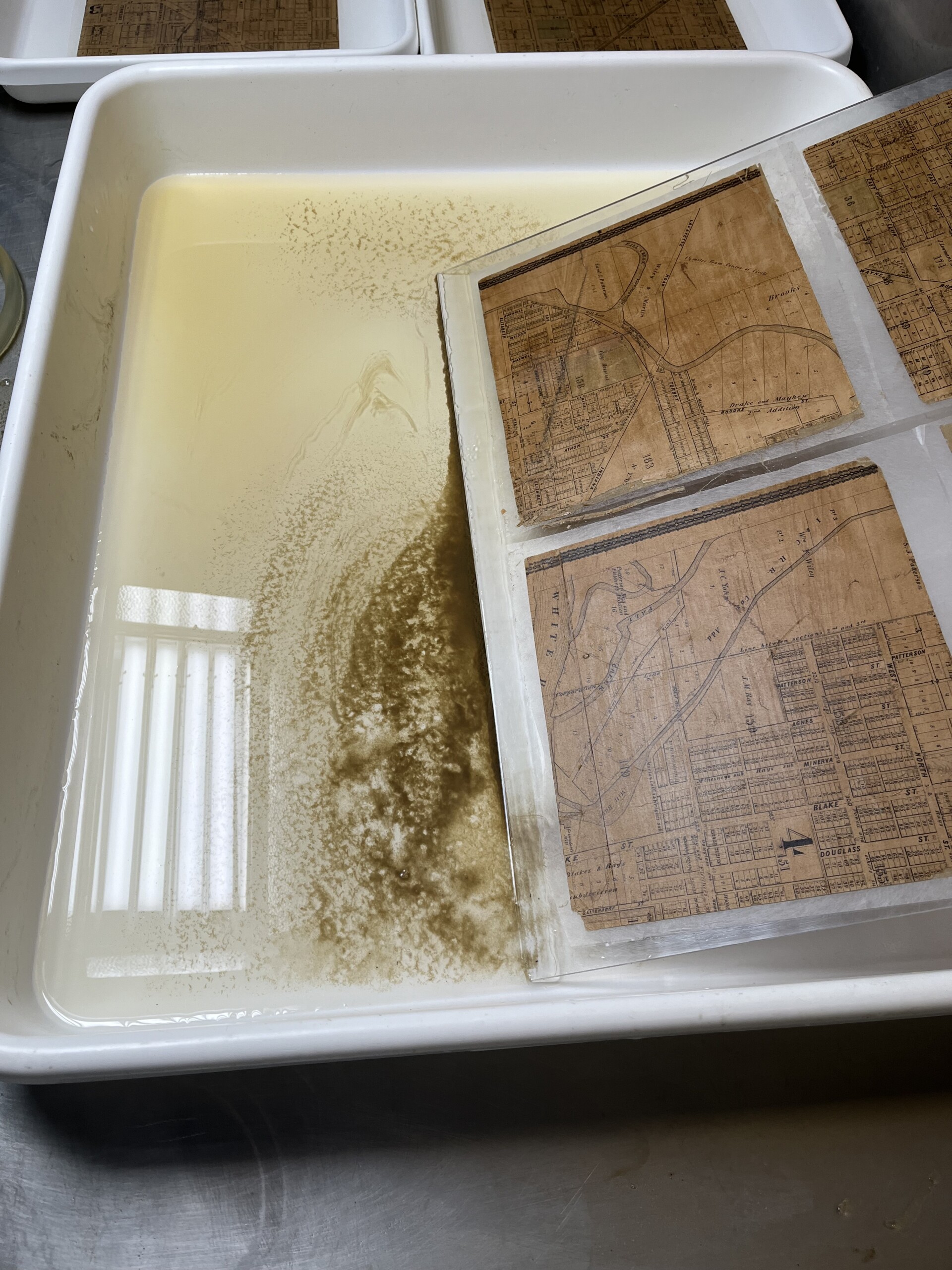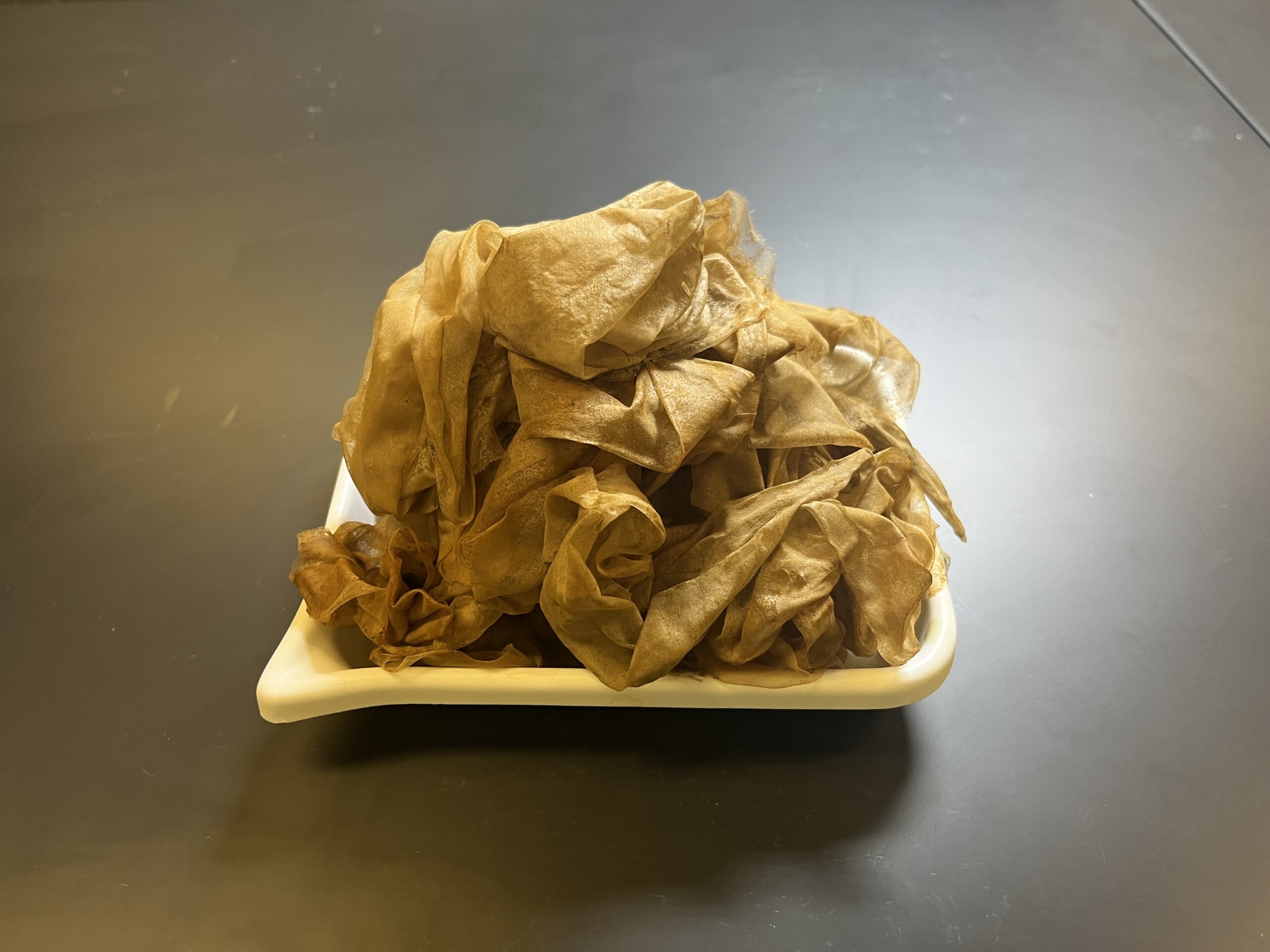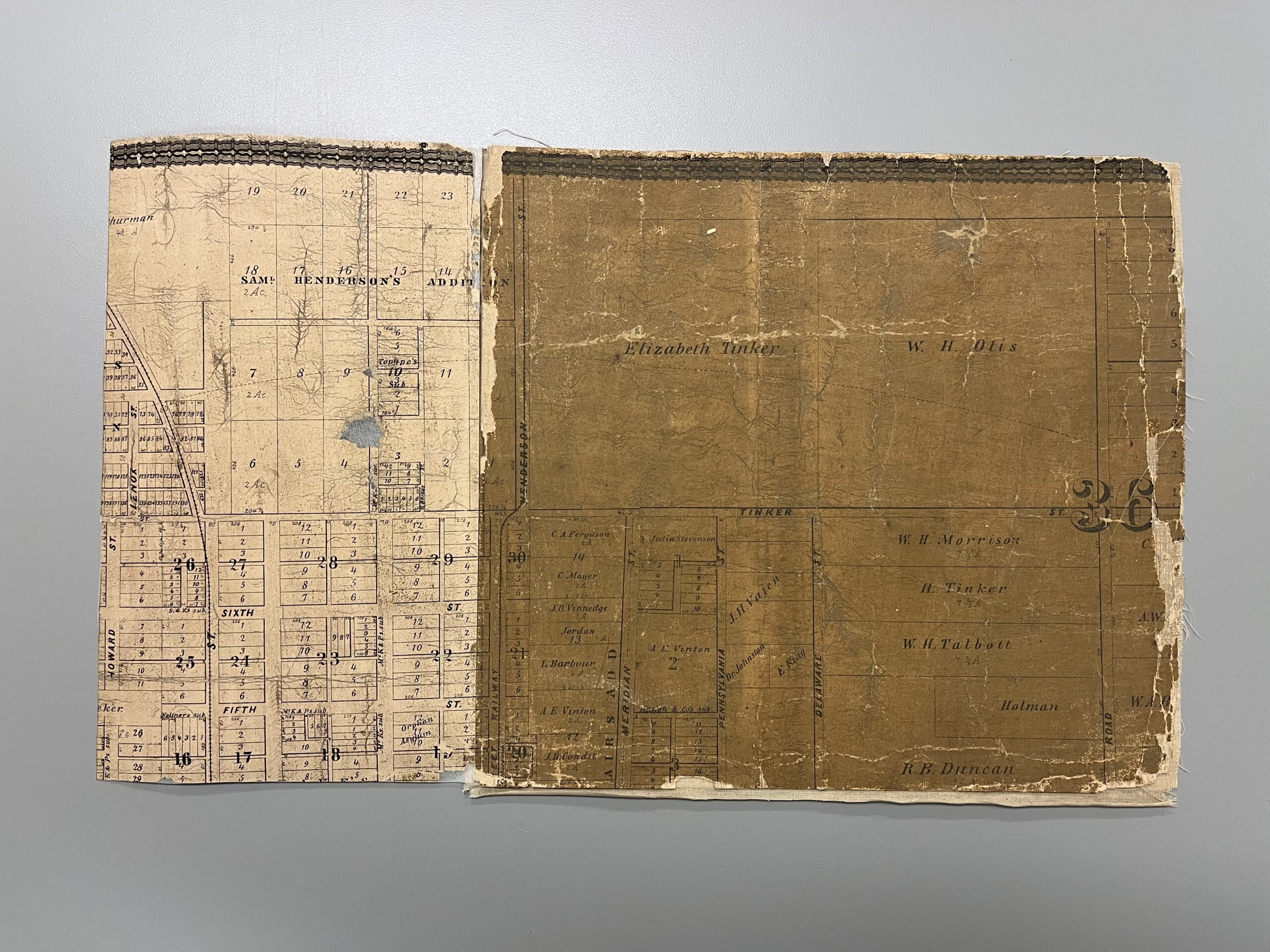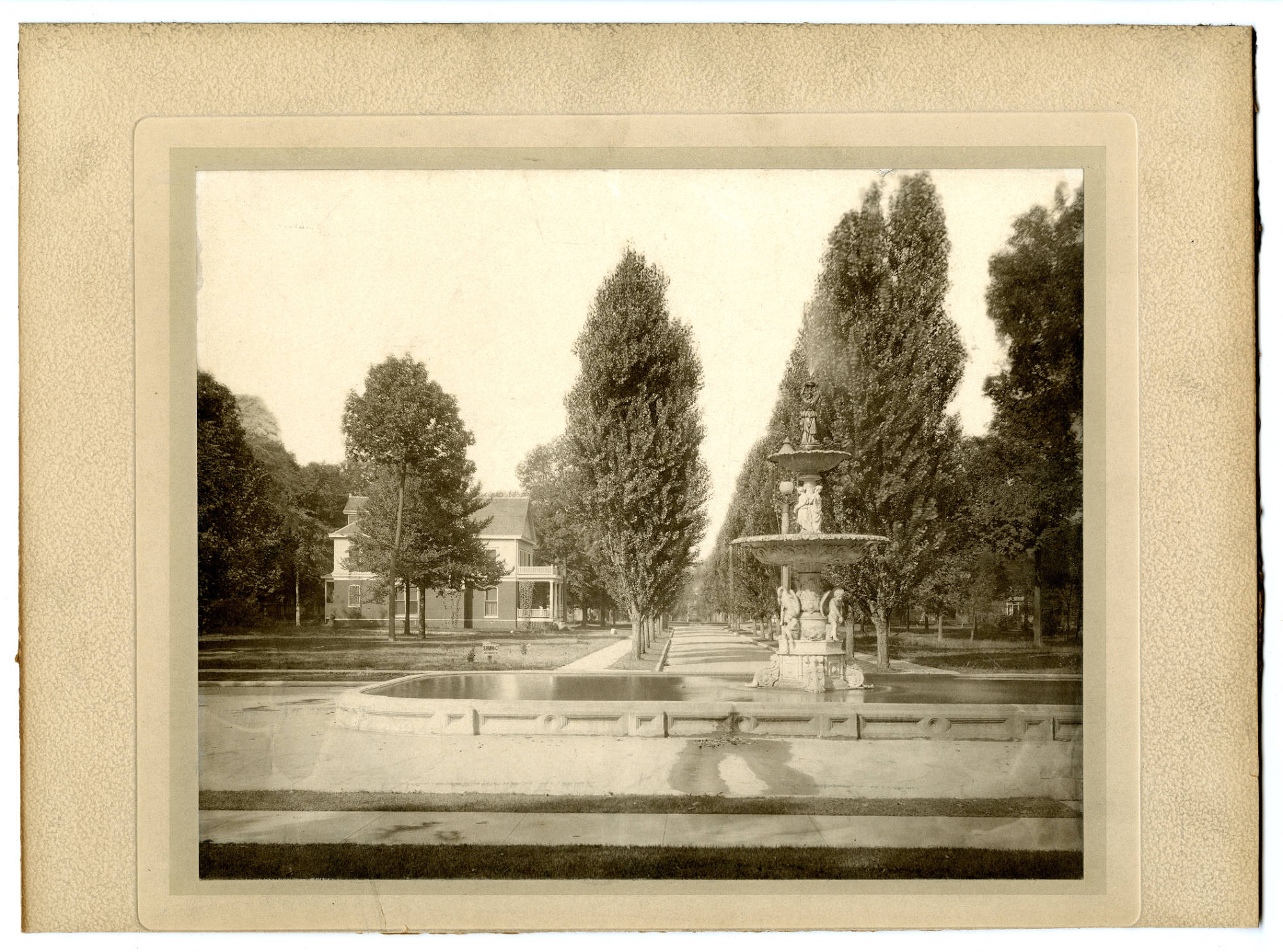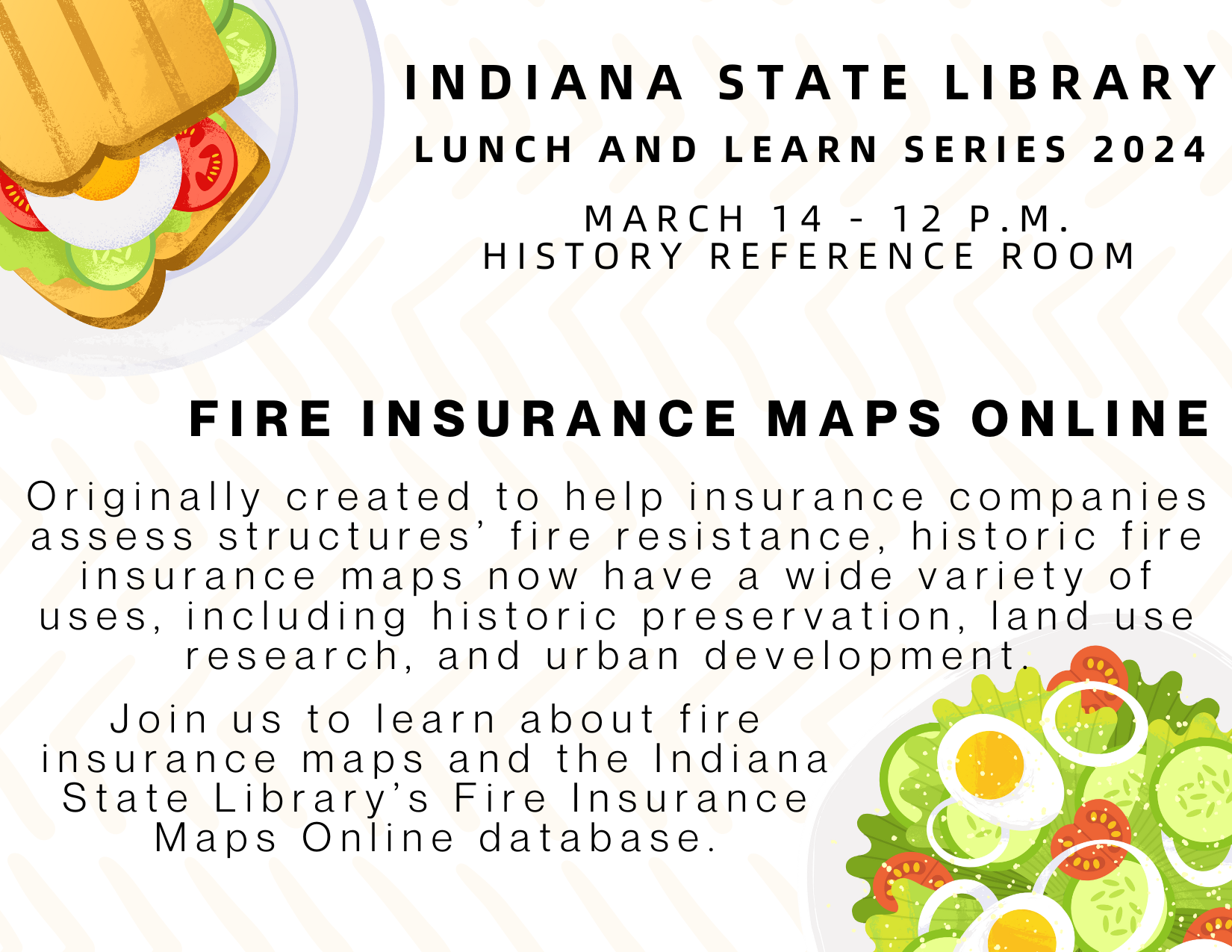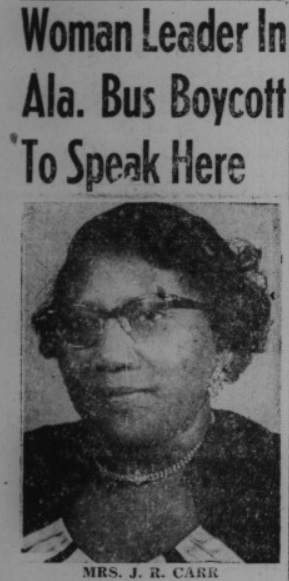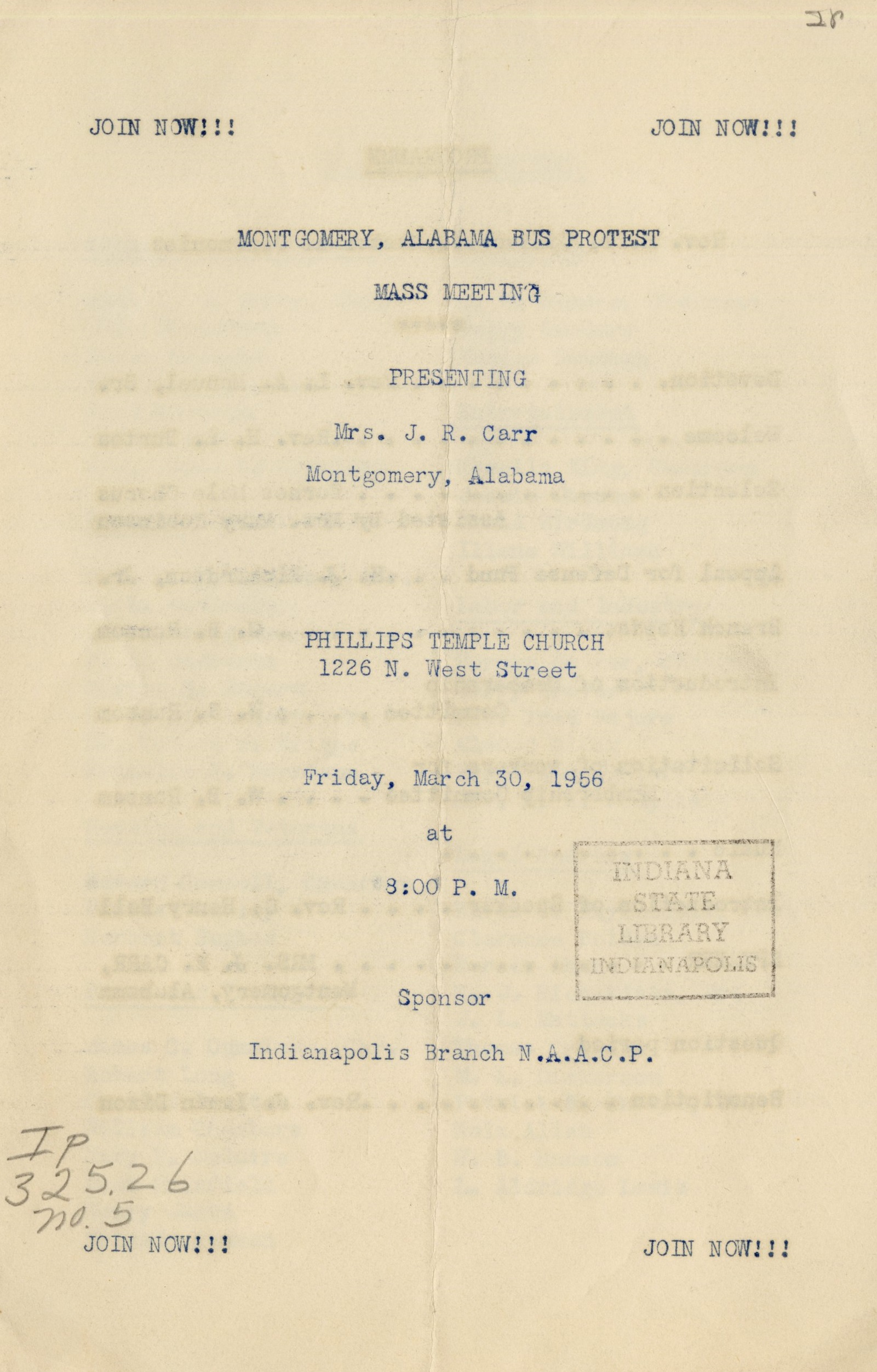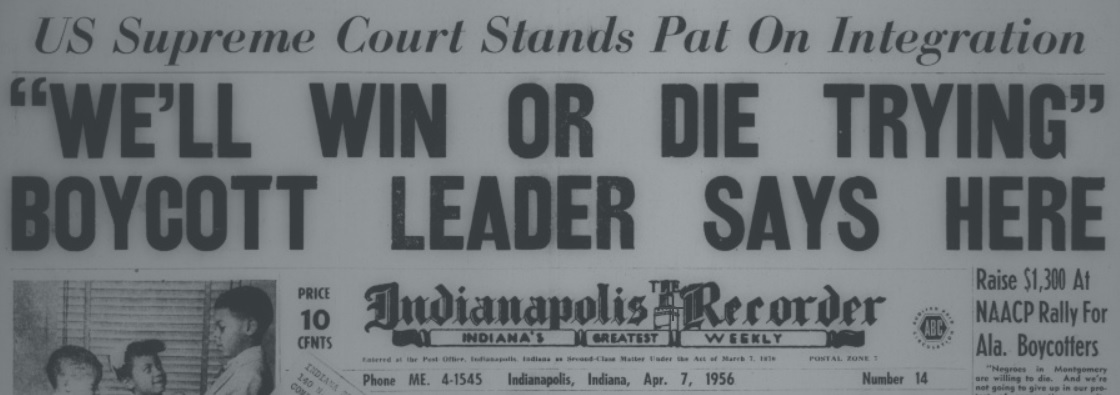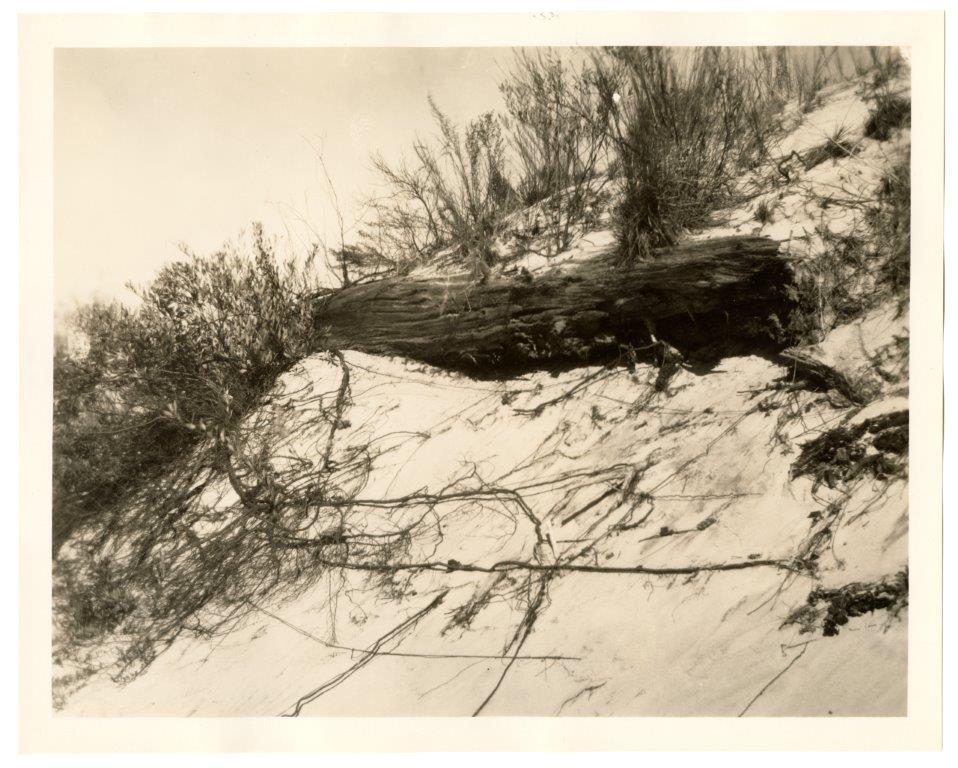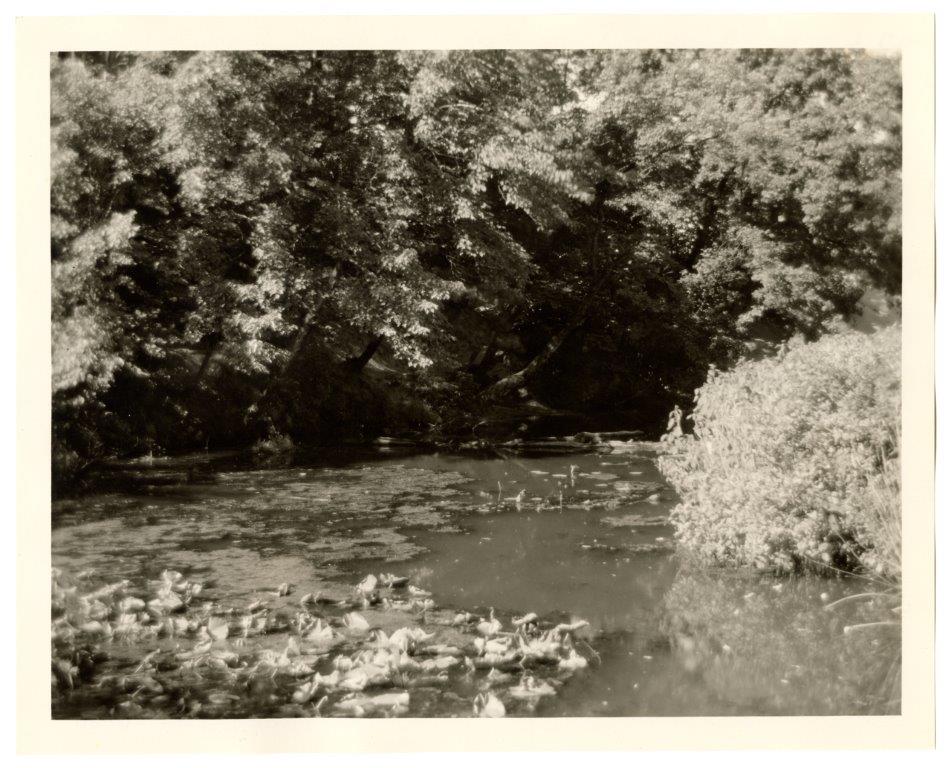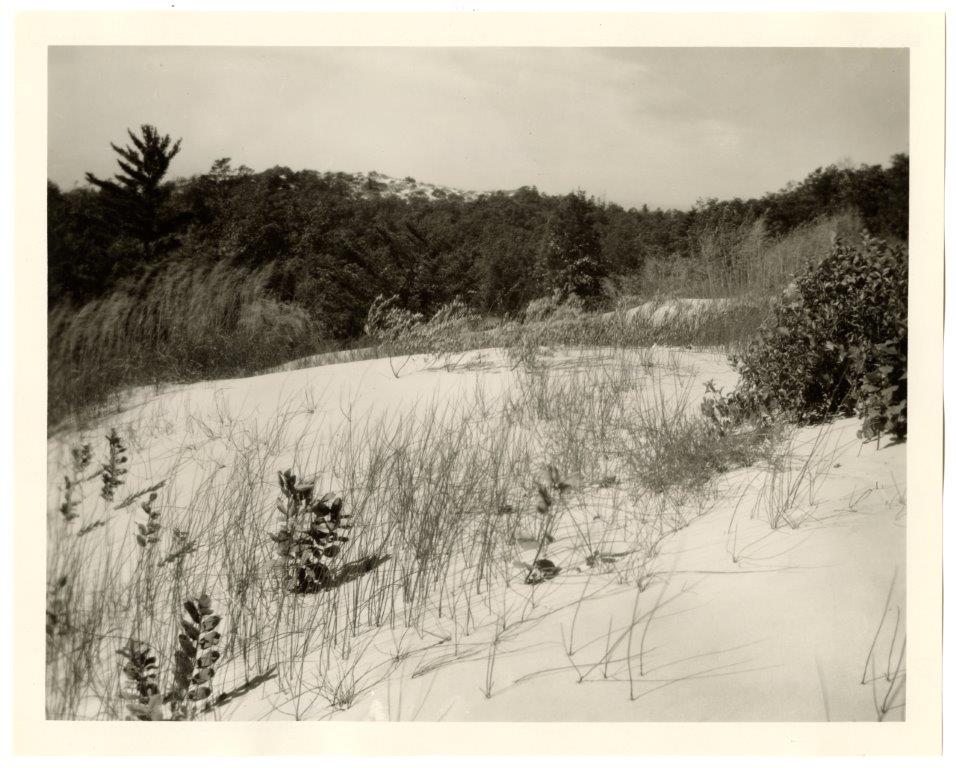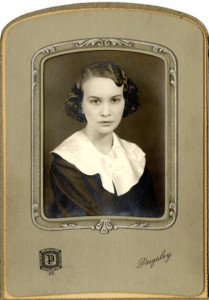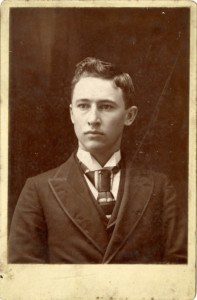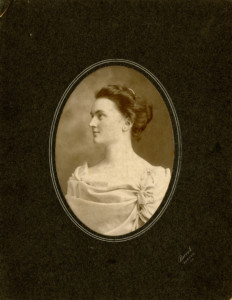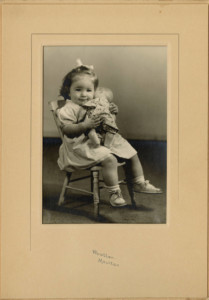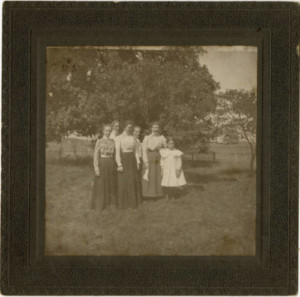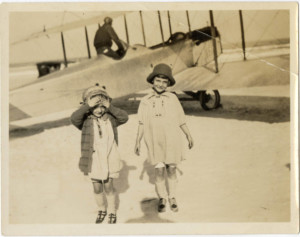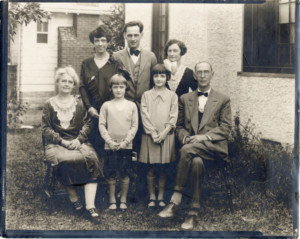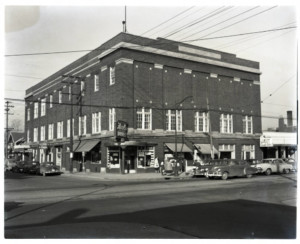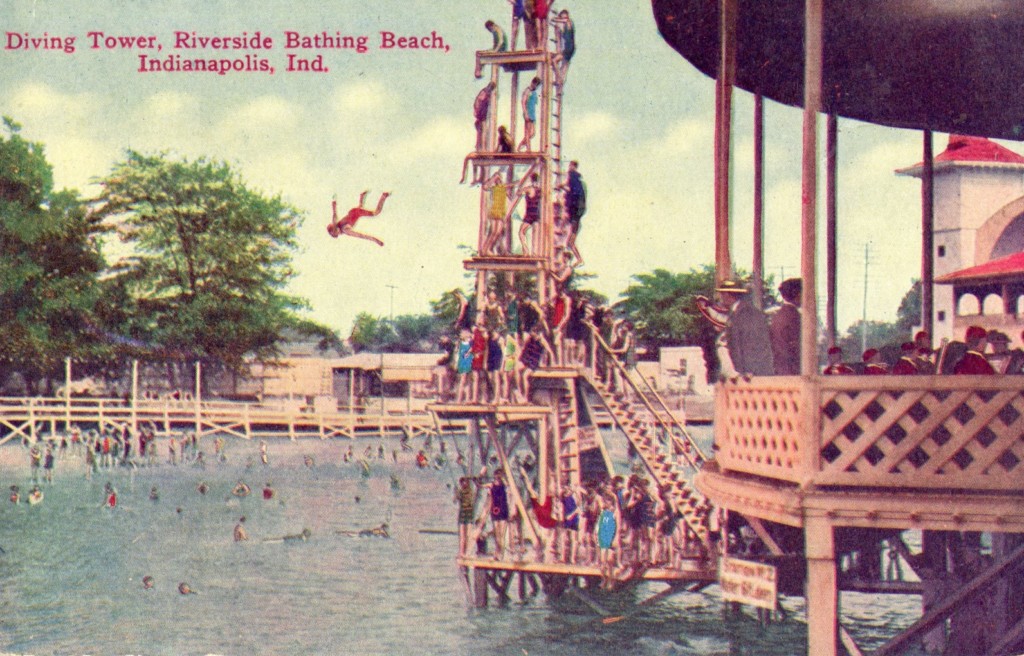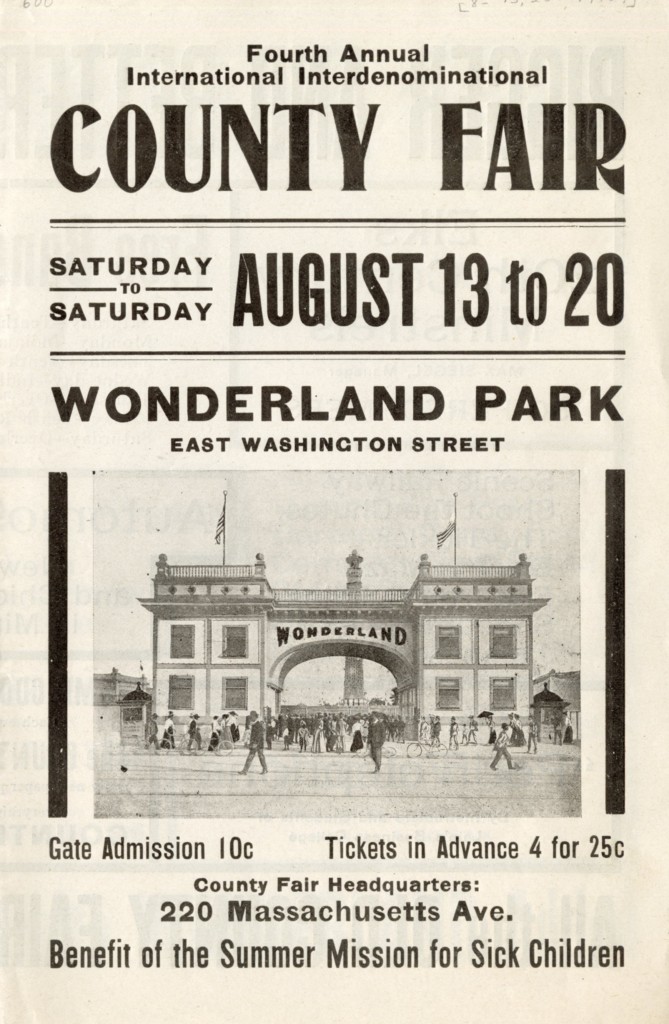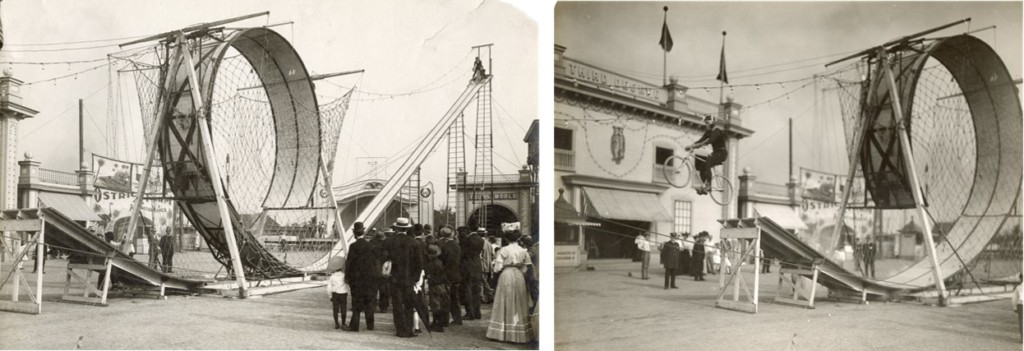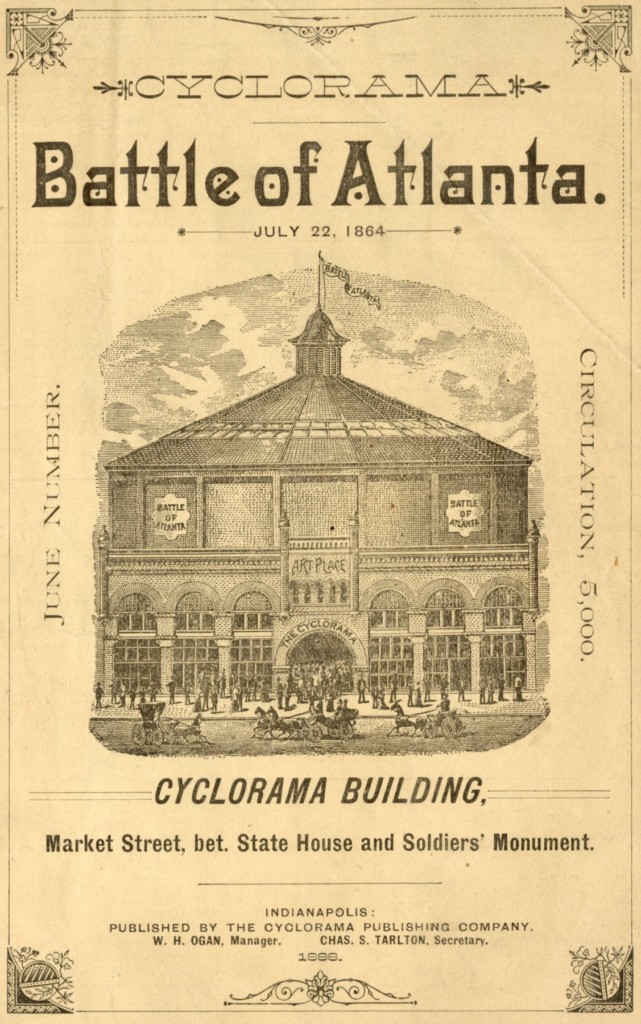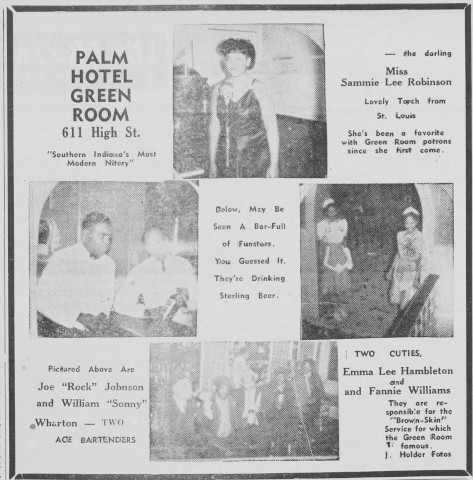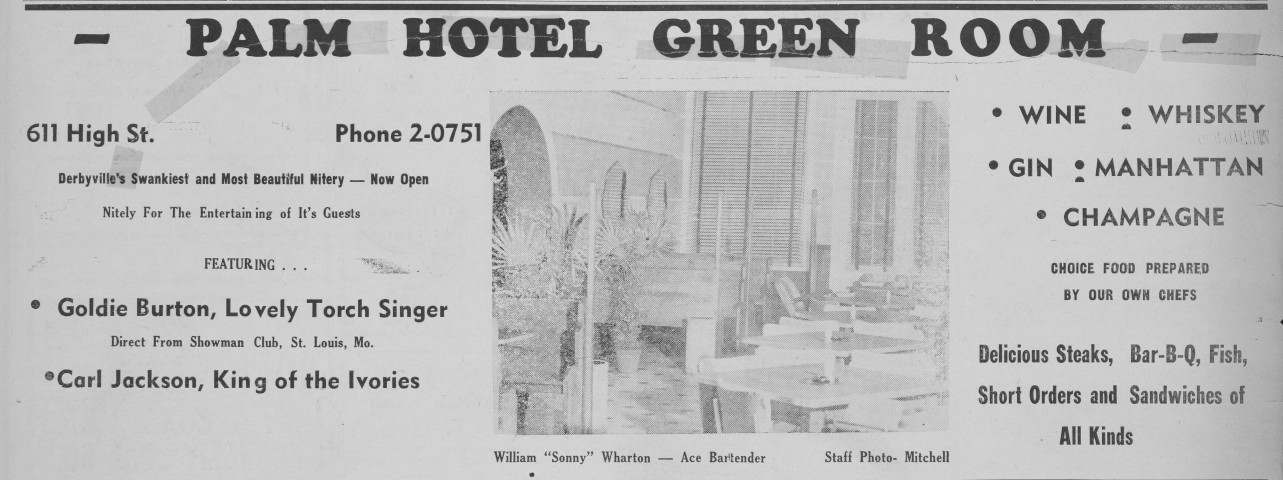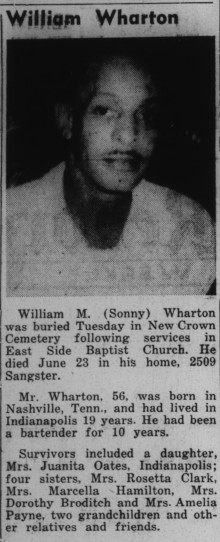
Photo of Greenlawn Cemetery, ca. 1920. “A Transcript of the Grave Stones Remaining in Greenlawn Cemetery Indianapolis.” Indianapolis: Emmerich Manual Training High School, 1920.
The Genealogy Division of the Indiana State Library recently digitized our records pertaining to Greenlawn Cemetery in Indianapolis. These records were created in the early 1920s to document the remaining graves in Greenlawn before they were removed. Many of the records come from the company that owned the land at the time. However, the most interesting part of the records are the photographs, which were created by staff and students at Emmerich Manual Training High School as part of a class project.

Greenlawn Cemetery in 1898. “Insurance Maps of Indianapolis, Indiana, Volume 1.” New York: The Sanborn-Perris Map Co. Limited, 1898.
A new city needs a new cemetery
Greenlawn was the first public cemetery in Indianapolis. Established in 1821 near the White River and present-day Kentucky Avenue, many of the earliest residents of the city were buried here. As the main city cemetery, Greenlawn served as the final resting place for everyone from those buried at public expense to prestigious Hoosiers Indiana Governor James Whitcomb and early settler Matthias Nowland.
A Long, Slow Decline

Indianapolis death records from September 1872. Greenlawn is referred to as City Cemetery in these records. “Death Records Indianapolis, Indiana 1872-1874.”
By the 1860s, the trustees of Greenlawn became concerned that the cemetery was nearing capacity. They could not purchase adjoining land due to encroaching industrial and commercial development. Despite concerns about overcrowding, burials continued in Greenlawn for another 30 years, although more and more families chose to purchase plots in the newly developed Crown Hill Cemetery.
The last burial in Greenlawn took place around 1890. By this point, the cemetery was already deteriorating. Vandalism and flooding from the river, along with neglect by the cemetery caretakers, resulted in many broken and missing tombstones and unidentifiable graves.
Greenlawn in the early 20th century

Among the events held in Greenlawn Cemetery Park was a ragtime concert by the Indianapolis Military Band. Indianapolis Star, July 31, 1904.
Public complaint about the condition of the cemetery led city and cemetery officials to move many of the remaining graves to Crown Hill and to seek other uses for Greenlawn. By 1904, part of the land had been reclaimed as a park. Although events and concerts took place there, the park did not garner much popularity with the public. In an article published on Nov. 22, 1908, the Indianapolis Star referred to the area as “Neither a first-class cemetery nor a first-class park” and proposed that the remaining graves be removed and the area converted to a “modern park.”

Newspapers reported on what was being done at Greenlawn throughout this time period. Indianapolis Star (l-r) July 7, 1907; Nov. 15, 1911; March 4, 1917.
Plans for the expanded park never materialized, but redevelopment of the land continued. In 1907, the Vandalia Railroad sought to build tracks across another section of Greenlawn. Over the next decade, more graves were cleared to make way for the railroad, cutting across the northern section of the cemetery.
Industrial expansion

The former Greenlawn area in 1927. Most of the cemetery has been overtaken by railroads and industrial development, while the city retained ownership of a few parcels on the river. “Baist’s Real Estate Atlas of Indianapolis.” Philadelphia: G. W. Baist, 1927.
By the 1920s, manufacturing and industrial sites on the White River took an interest in expanding onto the Greenlawn site. During this time, the few remaining legible grave markers were documented and the records deposited at the State Library before the last visible traces of Greenlawn Cemetery were removed. Although future construction would continue to turn up evidence of burials, even into the 21st century, the cemetery largely slipped out of public memory just as it disappeared from the public eye.

More images from Greenlawn ca. 1920. “A Transcript of the Grave Stones Remaining in Greenlawn Cemetery Indianapolis.” Indianapolis: Emmerich Manual Training High School, 1920.
This blog post is by Jamie Dunn, Genealogy Division supervisor.

